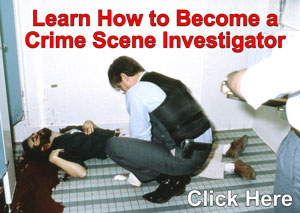Crime Scene Investigation and Forensic Science Articles
New Articles
 From ashes to evidence: A study on the alterations in bloodstain patterns in high heat environments and post- fire scenes, Zack Kowalske, Abdulrahman Oleiwi, Graham Williams
From ashes to evidence: A study on the alterations in bloodstain patterns in high heat environments and post- fire scenes, Zack Kowalske, Abdulrahman Oleiwi, Graham Williams A Preliminary Study of Map360 Area of Origin Tools, Eugene Liscio
A Preliminary Study of Map360 Area of Origin Tools, Eugene LiscioDo you have an article you would like posted on the "Crime Scene Investigator Network"? Submit an Article
Receive our free monthly newsletter and/or job posting alerts Click to sign up
Bloodstain
Computer Forensics

Crime Scene Investigation

DNA
Documentation

Fingerprints
- Table of Contents and Preface
- Chapter 1: History, by Jeffery G. Barnes
- Chapter 2: Anatomy and Physiology of Adult Friction Ridge Skin, by Alice Maceo
- Chapter 3: Embryology, Physiology, and Morphology, by Kasey Wertheim
- Chapter 4: Recording living and postmortem friction ridge exemplars, by Brent T. Cutro, Sr.
- Chapter 5: Systems of Friction Ridge Classification, by Laura A. Hutchins
- Chapter 6: Automated Fingerprint Identification System (AFIS), by Kenneth R. Moses
- Chapter 7: Latent Print Development, by Brian Yamashita and Mike French
- Chapter 8: The Preservation of Friction Ridge Information, by Laura A. Hutchins
- Chapter 9: Examination Methodology, by John R. Vanderkolk
- Chapter 10: Documentation of Friction Ridge Impressions: From the Scene to the Conclusion, by Alice V. Maceo
- Chapter 11: Equipment, by Julieanne Perez-Avila
- Chapter 12: Quality Assurance, by M. Leanne Gray
- Chapter 13: Fingerprints and the Law, by Andre A. Moenssens and Stephen B. Meagher
- Chapter 14: Scientific Research in the Forensic Discipline of Friction Ridge Individualization, by Glenn Langenburg
- Chapter 15: Special Abilities & Vulnerabilities in Forensic Expertise, by Tom Busey & Itiel Dror
- Appendices

Firearms, Toolmarks

Footwear, Tire Track and Other Impressions
- Detection of Footwear and Tire Impressions in the Field
- Forensic Documentation & Photography of Footwear & Tire Impressions at the Crime Scene
- Collection of Footwear and Tire Impressions in the Field
- Casting Footwear and Tire Impression Evidence
- Lifting Footwear and Tire Impression Evidence
- Chemical Enhancement of Bloody Footwear and Tire Impression Evidence
- Detection of Footwear and Tire Impressions in the Laboratory
- Collection of Footwear and Tire Impressions in the Laboratory
- Preparation of Test Impressions from Footwear and Tires
- Examination of Footwear and Tire Impression Evidence
- Range of Conclusions Standard for Footwear and Tire Impression Examinations
- Casework Documentation
- Scope of Work Relating to Forensic Footwear and/or Tire Tread Examiners
- Minimum Qualifications and Training for a Forensic Footwear and/or Tire Tread Examiner
- Standard for Terminology Used for Forensic Footwear and Tire Impression Evidence
Human Remains, Death Investigation

Miscellaneous
- American Congress of Forensic Science Laboratories Response to the report Forensic Science in Criminal Courts: Ensuring Scientific Validity of Feature-Comparison Methods, American Congress of Forensic Science Laboratories
- FBI Response to the report Forensic Science in Criminal Courts: Ensuring Scientific Validity of Feature-Comparison Methods, Federal Bureau of Investigation
- National District Attorneys Association Response to the report Forensic Science in Criminal Courts: Ensuring Scientific Validity of Feature-Comparison Methods, National District Attorneys Association
Packaging Evidence

Photography
Do you have an article you would like posted on the "Crime Scene Investigator Network"? Submit an Article



